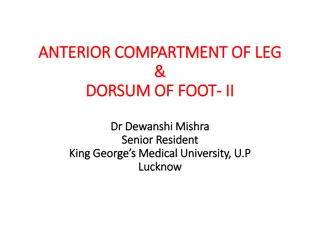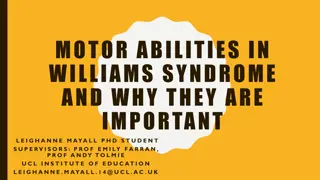Restless Leg Syndrome Case Study: Diagnosis and Management
Explore a detailed case presentation and diagnostic testing for Restless Leg Syndrome (RLS). Learn about the patient's symptoms, history, differential diagnosis, and recommended medications and tests.
Download Presentation

Please find below an Image/Link to download the presentation.
The content on the website is provided AS IS for your information and personal use only. It may not be sold, licensed, or shared on other websites without obtaining consent from the author.If you encounter any issues during the download, it is possible that the publisher has removed the file from their server.
You are allowed to download the files provided on this website for personal or commercial use, subject to the condition that they are used lawfully. All files are the property of their respective owners.
The content on the website is provided AS IS for your information and personal use only. It may not be sold, licensed, or shared on other websites without obtaining consent from the author.
E N D
Presentation Transcript
Restless Leg Syndrome Case Study James A. Rowley, MD for the Sleep Education for Pulmonary Fellows and Practitioners, SRN ATS Committee May 2015
Part 1: Case Presentation AF is a 35 year old female who comes to your office with complaints of difficulty falling asleep at night for the last year.
Questions What are important components of a good history focused on insomnia? What is the differential diagnosis of insomnia?
Case Presentation Upon further questioning, AF states: Bedtime is at 11p and generally takes her 30-45 minutes to fall asleep Wake time is 7a weekdays, 8a on weekends When cannot fall asleep, generally stays in bed watching the clock While trying to fall asleep, feels restless and is constantly moving her legs Does not watch TV or read in bed Only drinks juices or herbal tea after dinner Does not smoke or consume alcohol Is generally sleepy when gets into bed at night Does not worry about her sleep during the day Feels fatigued during the day
Questions What additional questions should be asked to confirm the diagnosis of restless leg syndrome? Are there any questionnaires for RLS?
Case Presentation Upon further questioning, AF states that: The restlessness in her legs often feels like something is crawling up them The restlessness generally improves if she moves her legs around She occasionally notices the creepy-crawly feeling when watching TV in her living room if lying on couch Symptoms bother her at least 4 nights per week Had similar symptoms about 5 years ago during her pregnancy Her father and brother have similar symptoms
Part II: Diagnostic Testing Given the diagnosis of RLS: Which medications need to be checked for? What diagnostic testing is indicated?
Case Presentation Upon further questioning: AF only medication is omeprazole for GERD Ferritin level is 80
Questions What treatment options are available for RLS and what would you recommend for this patient? Is RLS associated with other medical conditions and long term health outcomes?
Part III: Treatment You prescribe AF pramipexole 0.25 mg one hour before bedtime. AF returns after 2 months with marked improvement in: Symptoms of restlessness: now only bother her about 1x/month Sleep latency most nights ~10 minutes
Question What is the relationship between RLS and periodic limb movements during wakefulness (Figure 1) and sleep (Figure 2) as observed on a sleep study?
Figure 1: Tracing of PLMs during Sleep
Figure 2: Tracing of PLMs during Wakefulness























